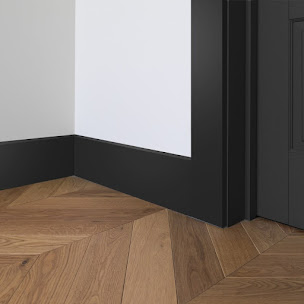Improving Workplace Safety with Stair Nosing
People often place their foot and weight on a step's nose, which causes wear and tear more quickly and increases the risk of slips and falls. Implementing safety and visibility-enhancing features, like Stair Nosing, can maximize access while enhancing the aesthetics and character of your décor, especially in buildings with high foot traffic.
In addition to solving and preventing problems, stair nosing can extend the lifespan of the floor covering material and the stair tread.
In the majority of companies, stairs are a common walking surface. Stair falls can cause fatalities or major injuries. Employees have an obligation to utilize stairways appropriately and as intended, and employers are required to take precautions in their workspaces to safeguard workers against trip, fall, and slide dangers on any walking or working surface.
An essential component of every construction is stair safety. Accidents involving stairs commonly result in injuries ranging from mild to extremely serious each year in homes, businesses, and municipal structures. One great and affordable method to reduce the chance of disasters in your building is to install anti-slip stair nosing.
Simply put, stair nosing is a piece that extends over the stair's edge and creates friction between the top of the step and the bottom of a foot. The handrails can be made of a variety of materials, and the additional friction is intended to keep people from slipping when using the stairs.
Aluminium Stair Nosing can be made with high visibility materials in addition to the typical grip material. These assist buildings comply with numerous safety rules and make the stair edges visible to people using them. Furthermore, non-slip materials that illuminate in the darkness when the lighting is turned off are available, making staircases simple to use in emergency circumstances and during power outages.
Everyone who frequently uses your stairs will appreciate the effective measure that is high-quality anti-slip stair nosing for the structure of the building. You will save money and everyone will be in a safer atmosphere when risk and liabilities are reduced.
Building a healthy and secure place of work for your staff also depends on installing the proper flooring. Businesses must make certain they have the suitable flooring installed, considering a number of aspects based on the setting and sector, including fire safety, ergonomic qualities, and resistance to slippage and impact.
Choose flooring materials that are resistant to fire, as well as those that are long-lasting and can tolerate frequent cleanings, impact, and hard use. Make sure the maintenance requirements match the resources you have available by evaluating them.
Selecting a Anti Slip Stair Nosing or slip-proof surface is very crucial in locations that are prone to dampness or spillage, especially when preparing chemicals or food. Employers have an obligation to reduce the possibility of trips and falls in certain settings.
To further reduce the chance of trips and falls, it's also critical to think about the appropriate footwear that staff members should wear. Shoes should be well-fitting, supportive, and have non-slip soles. Encourage staff members to wear suitable footwear, and if they work in places where there is a significant risk of slipping risks, think about offering them slip-resistant footwear.




Comments
Post a Comment